If you are in the seafood business, the seafood supply chain is a primary concern for you. Getting products from the stage of the initial catch, all the way to the customer, is a difficult process that requires a lot of expertise at every stage. Without the right logistics company behind you, the seafood supply chain can be incredibly difficult to manage.
This is a big issue for companies in Washington State because of the volume of seafood that is caught and processed in the area. Finding solutions to ship that volume of seafood, process it, and get it out to the customer isn’t easy, and seafood supply chain problems are very common. However, there are ways around these supply chain issues as long as you work with an experienced logistics company.
Fishing and seafood has been a very important part of the culture and the economy in Washington State for hundreds of years. The traditions and expertise in Washington State, and its location make it central to the fishing economy of the entire Pacific Coast, all the way from California to Alaska. The lifestyle and economy of the region are very heavily influenced by the harvesting, processing, marketing, and consumption of a wide variety of different types of seafood.
Since the mid 1800s, the seafood production in Washington has been steadily increasing and it is now the country’s leading producer of farmed shellfish. It is estimated that the seafood industry in Washington State employs more than 3,200 people, this amounts to around 12% of the total American aquaculture employment. The total revenue generated by shellfish sales is $270 million annually.
As well as farming a large amount of the seafood sold in the country, a lot of seafood is processed and shipped through Washington State as well.
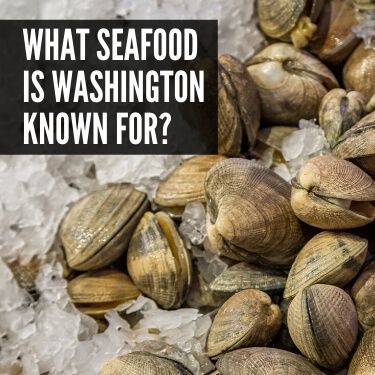
The rich seafood culture in Washington State means that it is a large part of their diet as well. Washington State is not just known for producing and shipping large amounts of seafood, it is also known for producing some of the best seafood dishes in the country as well.
These are some of the main seafood varieties that Washington State is best known for:
The restaurants around Washington State make good use of this fresh seafood and it is a huge part of their culinary culture. There is also a strong focus on sustainable seafood in Washington State. The seafood supply is well managed so the majority of the seafood that is produced or processed in the state meets the Marine Stewardship Guidelines for sustainable fish products, and there are plenty of sustainable fisheries in operation there.
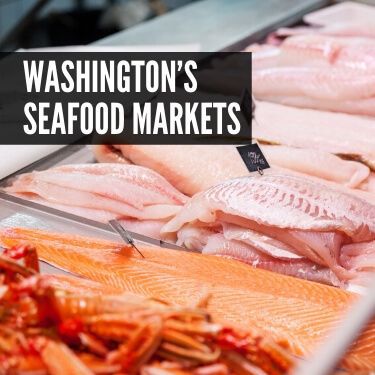
Unsurprisingly, there are a lot of fish markets in Washington State where you can browse and buy a huge range of different seafood products. These markets are popular with the local population, who rely on seafood as a large part of their diet. They are also a popular tourist attraction for people that are visiting the area. The majority of the most popular seafood markets in the state can be found in Seattle.
Taylor Shellfish Farms is one of the best established seafood markets which, as the name suggests, specializes in shellfish. Oysters are one of the main exports out of Washington State, and they’re a very popular product at the market as well. They also sell a lot of geoduck clams that Washington State is best known for. The company has multiple markets and oyster bars selling shellfish around the Puget Sound area. They produce around 2,000,000 of clams every year, turning over an annual revenue of $50 million. This massive amount of shellfish is shipped throughout the state to the company’s various markets and oyster bars.
The Pike Place Fish Market is one of the best known fish markets in the world. This market has been operating for almost 90 years and has a strong commitment to sustainable fishing and quality. One of the things that sets them apart from the other big fish markets in the area is that they offer overnight shipping of fresh fish to anywhere in the US. This requires a well planned and efficient supply chain in order for the company to maintain that promise.
The term supply chain refers to the network and the systems that are put in place by companies and their suppliers in order to deliver a product to the buyer. This process manages the journey of a product from the initial manufacture stage all the way to the final delivery to the customer. Along the way, a supply chain involves a lot of different people and organizations, as well as vehicles and, in some cases, specialist equipment. Companies develop supply chains so they can manage their costs effectively and look for ways to cut their expenses. Effective supply chain management is vital for all businesses if they want to stay relevant and keep their prices competitive.
Although every supply chain differs depending on the product and the needs of the business, the main steps that need to be included in all supply chains are as follows:
These are the basic steps that all products will go through. However, there are a lot of other steps that need to be taken between each of these points, and if the product itself is complex, the supply chain can be very difficult to manage. Things like managing contracts, storing goods and products, and carrying out quality control can all be very important steps in the supply chain, and they also need to be accounted for.
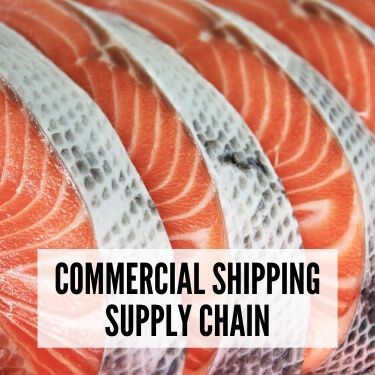
Fish is the largest source of natural protein in the world, even though 50% of it is farmed. However, it is an incredibly perishable product, which means that a very efficient commercial shipping supply chain is needed to ensure that the product reaches the customer before it spoils. Unfortunately, around 20 percent of the fresh fish products sold in the world are spoiled before reaching the end customer because the commercial shipping supply chain is not always effective.
A commercial shipping supply chain refers to the systems that are put in place to transport goods across the country or even internationally. It is a general term that covers movement of the goods in any form, while logistics refers to the storing and warehousing of goods, etc.
Fisheries in Washington State rely heavily on commercial shipping supply chains to transport their goods to customers around the country and the world, all while maintaining the temperature effectively so the products are not spoiled.
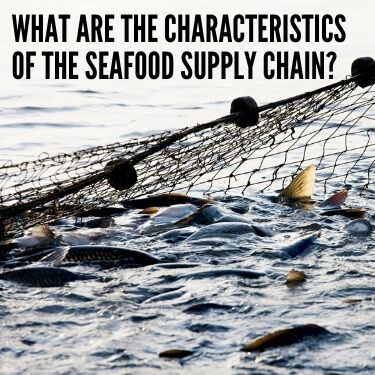
The seafood supply chain is different to other products in quite a lot of ways. The perishable nature of the product means that a lot of extra precautions need to be taken to ensure freshness. Fresh seafood is also harder to label and stack in some cases, especially when compared with a non-perishable product that fits easily into boxes. Understanding the specific characteristics of the seafood supply chain is important for any business that wants to ship fresh seafood safely.
These are the main characteristics of the seafood supply chain which differentiate it from other supply chains.
These characteristics make the seafood supply chain a lot different to the supply chains in other industries and they can give rise to a lot of specific challenges. This is particularly relevant where sustainable fisheries are concerned.
Products from fisheries aren’t the only perishable products on the road. Learn about How to Transport Floral Arrangements and How to Ship Meat in Bulk.
The specific issues that characterize the seafood supply chain cause a lot of problems when trying to manage fisheries effectively and ensure that sustainability standards are upheld. The current supply chain model in the seafood industry makes it almost impossible for consumers, and in some cases, players on the supply chain, to differentiate between sustainable and non-sustainable products. That means that people are unable to reward the more responsible seafood companies by choosing their products over others, regardless of the fact that these companies are spending more money on their supply chain in order to ensure sustainability. This means that companies do not have the incentive to make an effort to produce sustainable products. However, with a few simple changes to the supply chain, the situation could be improved.
By offering support at all stages of the supply chain, companies and consumers will be able to get a clearer idea of exactly where their seafood products are coming from and whether they are sustainable or not. This will encourage them to support more sustainable products. However, if this is to happen, there are some challenges in the seafood supply chain that need to be overcome.
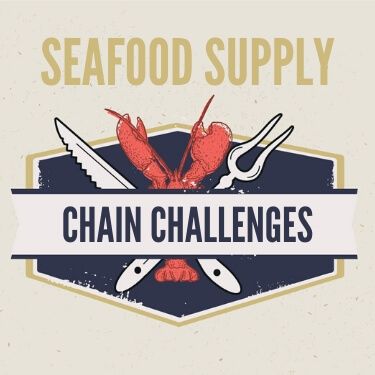
Seafood supply chains often encourage unsustainable fishing practices due to lack of transparency and traceability of the products, reverse incentives that make sustainable fishing more expensive without offering any benefits in return. The reason for this is that the seafood supply chain is a legacy system that has developed over time, and is not built to meet the specific needs of the industry as it is today. When the supply chain was first designed, sustainable fishing was not an issue that consumers or companies were interested in.
This outdated supply chain has led to a number of challenges in the seafood supply chain:
A combination of these distinct challenges means that encouraging sustainability in the seafood supply chain is more difficult than ever. Below, some of these challenges will be explored in more detail.
The lack of data capture on fishing vessels is a big problem in the supply chain. In most countries, fishing vessels are not required to report data about their catch and even if they are, the records are often vague and incomplete. While there are log books on fishing vessels that record data about the catch, it tends to only be simple information like the overall weight of the catch and a generic name. These records often have mistakes in them as well because fish are mislabelled or one broad name is used to refer to multiple different fish. It’s also very common for this information to be lost further up the supply chain, so it cannot be used either way.
This is a big problem because this data is the best tool for identifying how sustainable a seafood product is and whether it has been caught legally or not. Without this data, companies cannot use any mention of sustainability on their branding, so the consumer cannot factor it into their purchasing decision. A lot of governments also lack the resources to collect their own data on fisheries so they are reliant on anything that they get from the vessels.
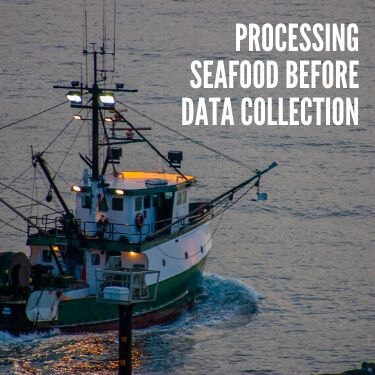
If data is not collected on the fishing vessel, it may be collected further on in the supply chain. While that is a positive thing, the seafood is often processed in some way before that data is collected. For example, a larger fish may have been sectioned up or skinned before the sex of the fish or the species can be determined. Fish may also be graded by size and smaller fish thrown back, so data about the original catch is lost. These processes may occur on the deck of the vessel, so there is no opportunity to collect any meaningful sustainability data beforehand. After the seafood has been processed, a lot of useful information can no longer be determined.
Supply chain aggregation is an issue that usually occurs on the deck of the vessel and it usually happens due to a lack of storage space. Different products from different fishing events are all mixed together, which makes it impossible to determine which fish came from which area of the ocean. Once you get through to the processing stage of the supply chain, fish will lots of different vessels will be sorted by size and mixed, so it is almost impossible to determine the source. Canned fish tends to contain a mixture of fish from different vessels and companies, which makes the source even harder to trace.The aggregation of supply makes it difficult to get any specific data on fish populations in different areas. It also makes it impossible to differentiate between sustainable and non-sustainable products. Aggregation of products promotes ‘mystery fish’, rather than ‘storied fish,’ as the norm.
Fishers have a very narrow skillset. They know how to fish, but they do not necessarily have the business knowledge to understand wider issues in the seafood industry, like the supply chain, for example. This causes a big issue where sustainable fishing is concerned. The majority of fishing companies do want to keep up with sustainability, but they feel that they have to spend a lot of time off the boat, and that’s not where they feel comfortable and know what they are doing.
Any strategy that aims to improve sustainability in the seafood supply chain must include a program of business assistance for the fishermen themselves. This helps them to deal with aspects of the supply chain that are less comfortable with, so they can focus their efforts on upholding sustainable practices when fishing.
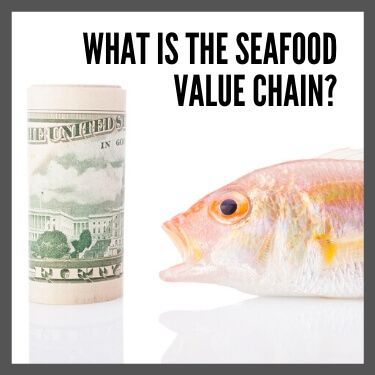
A value chain is defined as the set of steps that need to be taken to bring a product from initial conception all the way to delivery to the consumer. This value chain differs greatly between wild seafood and farmed seafood, as there are a lot of different processes at work.
These are the main steps in the seafood value chain:
The majority of seafood value chains will work in this way. However, there are always specific needs, depending on the type of product. For example, some fish are more likely to be canned, while others will go through more complex processes like smoking. The seafood value chain for these products will contain more steps and be more costly, but the eventual price point of the products will reflect that.
Although there are a lot of issues with transparency in the seafood supply chain, that has been changing a lot in recent years, especially in the US seafood industry. Seafood buying companies are making use of new tools that are available so they can give the consumer more detailed information about the source of their food. These tools include ecolabels, QR codes, online supplier maps, and fishery source lists.
The Ocean Disclosure Project, launched by the Sustainable Fisheries Partnership in 2015 has been very beneficial in increasing transparency in the seafood supply chain. It gives companies a simple template that they can use to disclose the source of all of the seafood that they sell. To date, 13 companies from Europe and North America have signed up and started publishing that information.
This is such an important development because transparency is vital to increasing sustainability in the seafood supply chain. When consumers can see exactly where the products are coming from and which ones are most sustainable, they can make more informed purchasing decisions. This drives actors at every stage of the supply chain to be more responsible because, if they aren’t, their sales will be impacted.
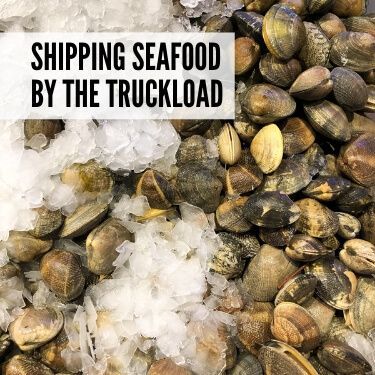
Shipping seafood by the truckload is the most efficient way to move large volumes of fish products, which is vital for anybody at the beginning of the supply chain in the fishing and seafood industry. However, it does raise a lot of very specific challenges. If those challenges are not met, the quality of the seafood will be compromised and there is a distinct possibility that it will be spoiled before it reaches the end customer.
These are some of the main challenges that you will face when shipping seafood by the truckload:
The specific challenges involved with shipping seafood by the truckload mean that it is necessary to find expert logistics companies that have the necessary experience. Unless the shipping company can ensure that the schedule is adhered to strictly and the product is temperature controlled properly, a seafood producer can make some huge losses due to spoiled products.
At R+L Global Logistics, we have vehicles fitted with temperature control systems so we can ensure that your seafood products are always kept at the optimum temperature and you won’t make any losses as a result of spoiled products. Other truckload shipping services include expedited freight shipping and more.
No matter whether you are shipping from Washington to Texas, Washington to California or even cross country from Washington to New York, we are prepared to get your freight there on time and intact. With more than 99% on-time delivery, R+L Global Logistics is prepared to be your partner.
We have a network of over 22,000 carrier partners, so we have the capacity to manage all of your deliveries, and handle any unexpected deliveries if your catch is larger than initially expected. If you are in need of help managing the seafood supply chain, get in touch today to see how we could help you. Get a truckload shipping quote today.
R+L Global Logistics
315 NE 14th St., Ocala, FL 34470